Aage Schaanning (pictured), chief financial officer at Norway’s Kommunal Landspensjonskasse (KLP), talks to Carlo Svaluto Moreolo about the fund’s risk framework

Norway’s institutional investment landscape is dominated by the €1trn-plus Government Pension Fund Global, the fund managing the country’s surplus from oil production activities. As one of the world’s largest sovereign wealth funds, and because of its size and complex governance framework, it is constantly under the spotlight. But Norway’s second-largest pension fund, the Kommunal Landspensjonskasse (KLP), is just as interesting and complex.
With assets of NOK786bn (€72bn) as of June, KLP is also Norway’s largest life-insurance company. As a mutual organisation, it is fully owned by its clients, which are Norwegian municipalities, county authorities, health enterprises and businesses in the public and the private sectors. Through a host of subsidiaries, KLP provides pensions, insurance and other financial services to those organisations and their employees.
Speaking to Aage Schaanning, KLP’s chief financial officer (CFO), it seems that the mutual ownership structure puts the company in an enviable position. This is especially true when it comes to dealing with crises such as COVID-19.
Schaanning says that KLP’s strategic asset allocation is derived from its capacity and willingness to take risks, which are largely determined by the size of the company’s financial buffers. The size of the buffers depends on the past performance of the portfolio, but most importantly on the decision, taken each year, whether to return profits to clients or keep them within the company.
“During years of good performance, the board has been very persistent in building the financial buffers instead of taking assets out of the company. They are very conscious that by doing that, we can stay invested when markets get volatile and keep harvesting risk premia,” says Schaanning.
“There is a very positive connection between what we are trying to achieve with our investment portfolio and our strategy for spending our profits.
“The key issue is that KLP is a mutually-owned company. Because our clients are also our owners, they share the same goal as the company’s management, which is to provide good pensions at a low cost,” he says.
Earlier this year, KLP announced that it had reversed the decision to pass NOK10.8bn of 2019 investment profits back to clients. The decision was partly influenced by Norway’s financial regulator, Finanstilsynet, which asked mutual insurers to reconsider their plans on profits and dividend distribution in light of the COVID-19 crisis. Nevertheless, KLP’s decision to use the profits to shore up the company’s buffers shows how the long-term solidity of the business takes priority over short-term gains.
A quick review of KLP’s performance for the first half of 2020 shows how the organisation has coped with the turmoil on the markets. It reported a 0.5% loss on its investment portfolio, after recording a 3.7% loss for the first quarter and a 3.2% gain during the second quarter. Nevertheless, the booked return, which is the actual amount passed on to customers, was 1.9%.
The company also reported the sale of its defined contribution (DC) pensions subsidiary, which generated a loss of €14.3m. But total assets rose by 3% during the first half of the year, and KLP’s buffers are solid, according to Schaanning.
He says the portfolio withstood the challenge presented by COVID-19. “We are used to tackling large market movements, thanks to the experience of our team. With the IT crash in 2001 and the 2008 financial crisis, we had already experienced two significant market events during the last two decades.
“Our dynamic risk strategy enables us to adjust the portfolio according to the financial buffers we have. When COVID-19 happened, although it caused very large movements, they were within the ranges we had been modelling. We just had to follow the plan,” says Schaanning. “The crisis did not catch us unprepared, but it did make us appreciate the value of liquidity. We tend to have large holdings of liquid assets, and being a pension fund without any funding needs, that is very good in times of crisis,” he says.
Considering KLP’s investment approach, it is not surprising to find abundant liquidity within its portfolio. The organisation subscribes to the efficient-market hypothesis, by which all the available information is discounted by asset prices. It also pursues long-term risk premia.
“The crisis did not catch us unprepared, but it did make us appreciate the value of liquidity. We tend to have large holdings of liquid assets, and being a pension fund that is very good”
Schaanning says: “We believe that in the long term we will realise risk premia, so we try to harvest them. For that reason, we believe that having a diversified portfolio is very important. We do not take a strong view on markets. Instead, we hold a lot of index portfolios to get broad market exposure, and focus on cost-efficient asset management. In fact, the further away from home we are, the larger is our exposure to indices.”
At the same time, however, the company does have active portfolios, most notably of Norwegian assets. It pursues active management in areas where it has a comparative advantage, according to Schaanning. One of such areas is energy.
When deciding on the asset allocation strategy, the starting point for KLP is its risk capacity and willingness to take risks, based on the size of the financial buffers. “We spend a lot of time defining our risk capacity and our exposure to risky assets, by which we mean equities and real estate,” Schaanning says.
“In today’s low-interest-rate environment, there is a danger that we will take more risk than we can afford and end up investing in low-yield bonds. When we discuss our strategic allocation, we will caution the board about the level of risk in each asset class, so that the probability of being kicked out of those markets in time of stress is as low as possible. Our aim is to keep the strategic asset allocation pretty stable.
“While it is true that certain factors, such as central bank activity, are driving risk premia beyond normal levels, we still have to focus on return assumptions. We want to have a strategy that can withstand big corrections,” he says.
The company’s dynamic risk strategy consists of a rule-based approach, whereby the size of the financial buffers determine the level of risk in the portfolio. “We have various ways of reducing risk in the portfolio. We can sell cash instruments but we can also use futures and put options, depending on what is the most efficient way to do it. We tend to often use futures, because our portfolio is very international,” says Schaanning.
KLP’s quest for diversification implies that some assets have to be invested in alternatives. It has a real estate portfolio managed by a dedicated team through a subsidiary. It also holds private equity assets, through a fund of funds mandate, and an externally managed private-debt portfolio.
The majority of assets, are managed internally, in line with the organisation’s aim of keeping costs low. A 10-strong team is dedicated to the asset allocation strategy, while KLP’s asset management subsidiary looks after each portfolio of listed and unlisted securities. The organisation also holds a portfolio of loans, managed by its banking subsidiary, which has about 30 employees.
Sustainability is a fundamental element of KLP’s investment strategy. “We believe in ESG investment, and apply ESG criteria to the whole portfolio, not just a part of it. Although we have lots of indexed and passively managed portfolios, that does not mean we are passive owners. On the contrary, we are active owners, even of our passively managed stocks,” says Schaanning.
“We take full advantage of our voting rights and if we do not succeed in our engagement strategy, we are open to exclusions.” Earlier this year, KLP announced that it had sold €3.6m-worth of investments in firms engaged in activities related to coal, oil sands, gambling, alcohol and environmental damage. These firms expanded an existing blacklist. But Schaanning points out that the organisation prefers to pursue engagement activities. The sustainability approach is in constant development, as KLP refines the criteria for exclusion and assessment of ESG risks.
Schaanning says: “At the moment, we are spending a lot of time trying to understand the European Union’s green taxonomy. We are conscious of the importance that the taxonomy could have for our ESG strategy. Although we do not speculate on how it might turn out, we are optimistic about its transformative potential.”
One of KLP’s most significant engagement efforts concerns deforestation. It teamed up with Storebrand, the Scandinavian ESG-focused asset manager, to produce a guide for investors on the financial risks related to deforestation. The guide offers investors insights on how to assess the added risks of investing in companies engaged in deforestation activities.
“One of KLP’s most significant engagement efforts concerns deforestation. It teamed up with Storebrand, the Scandinavian ESG-focused asset manager, to produce a guide for investors on the financial risks related to deforestation”
KLP was also among a group of investors that met with Brazilian policymakers to discuss concerns about the deliberate burning of the Amazon rainforest. The talks were hailed a success, as Brazilian authorities banned the burning of rainforest for a period of time.
For KLP, COVID-19 was no less of a challenge than it was for other institutions, but Schaanning sees it more as an organisational than an investment challenge. “We have learned that we must have teams that are able to work from different places. It is as if diversification wasn’t only needed in portfolios, but in the company’s organisational structure as well,” he says.
“We have also learned how important it is to maintain a good work environment and to keep in touch with colleagues. After six months being away from each other, employees are getting a bit fatigued. Working alone is not pleasant. The workplace is a social network. Similarly, we understand the importance of being able to meet in person with clients, service providers and other stakeholders.”
Schaanning highlights the uncertainty of future developments on the markets. He says: “The response from policymakers has been sensible, and markets have reacted decisively. But sentiment among the population, and that includes the investment community, is not cautious. The important question is what happens when monetary and fiscal stimulus is rolled back.”
“As a Norwegian pension company, we guarantee our clients a rate of return, and with interest rates close to zero, and low yields on every asset class, it is going to be a challenge to meet our targets. That said, we will not dial up on risk. We will try to keep our buffers healthy and maintain a sensible asset allocation, because the danger to us is to be too exposed to the market when risk levels rise,” he says.
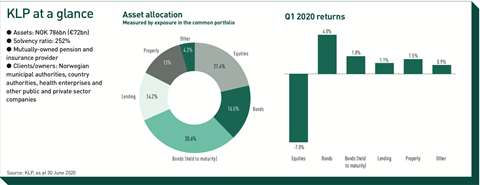








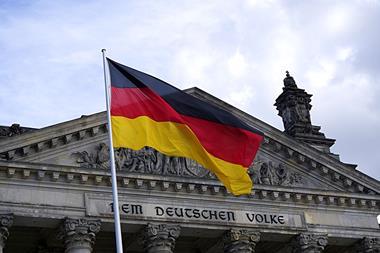

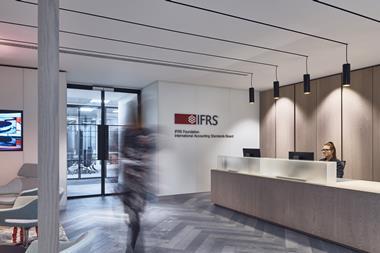

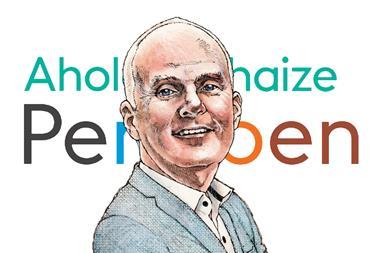
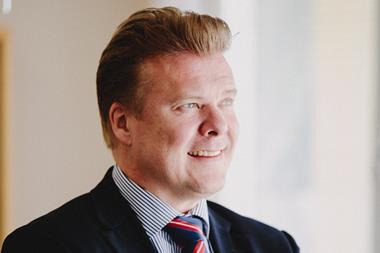
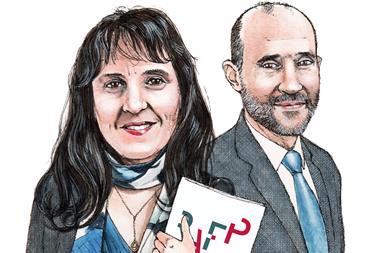
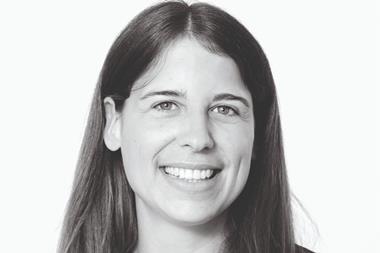

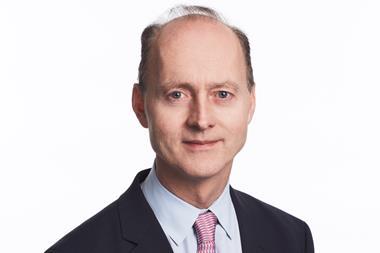
No comments yet